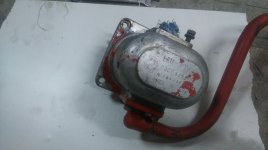Desired capacity in actual numbers would help.
Make it stiff. A stiff press is safer because there's less energy stored in deflected members. I've seen tools laid on the platen hop high in the air when a rusty coupling popped. You don't want a collapsing set-up to fall on your toe.
140 - 160 Bar is quite low for the usual shop press; its cylinder wil have to be quite bulky for the tonnage it exerts. The typical bottle jack press may develop 300 bar and a hand pump model 650 (Hope I'm getting my Metric conversions right.) Hydraulic shop presses usually operate at two or more times common industrial hydraulic pressures. 600+ Bar is usual for professional grade presses.
Your valve may be useful if you can tolerate the cylinder dimensions. 20T (metric) under 150 Bar pressure would require a 128 mm cylinder diameter.
The motor power required is a function of pump pressure and delivery. The ram speed is a function of the pump delivery and the piston area. The deflections are determined by beam formula. load, and the section modulus of the members under bending force,. The pin diameter by the number of pins. The press capacity, the shear strength of the pin material, etc. There's also the ancillary features: platen furniture, ram retraction, platen lift, a cylinder pressure gauge calibrated in tons or a pressure/tons chart, controls, a steady base, and a way to move it should that become necessary. And more.
All these numbers, component choices, and features have to work together if your press is to be successful. It aint rocket science but it is real engineering on a small scale.
If you want to design your own press there is no escaping the preliminary calculations. It's usually simpler to duplicate the press design you'd prefer buy if you could afford it.







